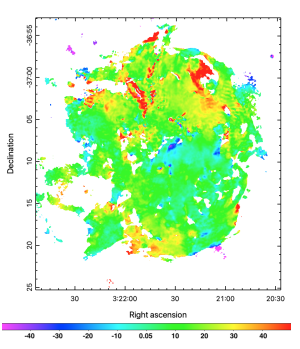2024-1022 ミネソタ大学
<関連情報>
- https://cse.umn.edu/college/news/new-imagery-technique-helps-understand-universe
- https://academic.oup.com/mnras/advance-article/doi/10.1093/mnras/stae2225/7810598
- https://arxiv.org/abs/2409.13973
偏光電波源におけるファラデー構造の擬似3次元可視化: 方法、科学的使用例、開発の優先順位 Pseudo-3D visualization of Faraday structure in polarized radio sources: Methods, science use cases, and development priorities
Lawrence Rudnick, C Anderson, W D Cotton, A Pasetto, E Alexander, M Tahani
Monthly Notices of the Royal Astronomical Society Published:03 October 2024
DOI:https://doi.org/10.1093/mnras/stae2225

Abstract
We introduce the construction of polarized intensity cubes P(RA, Dec, Φ) and their visualization as movies, as a powerful technique for interpreting Faraday structure. P is constructed from maps of peak polarized intensity P(RA, Dec) with their corresponding Faraday depth maps Φ(RA, Dec). We illustrate the extensive scientific potential of such visualizations with a variety of science use cases from ASKAP and MeerKAT, presenting models that are consistent with the data but not necessarily unique. We demonstrate how one can, in principle, distinguish between cube structures which originate from unrelated foreground screens from those due to magnetized plasmas local to the emitting source. Other science use cases illustrate how variations in the local ne B, and line-of-sight distance to the synchrotron emitting regions can be distinguished using Faraday rotation. We show, for the first time, how the line-of-sight orientation of AGN jets can be determined. We also examine the case of M87 to show how internal jet magnetic field configurations can be identified, and extend earlier results. We recommend using this technique to re-evaluate all previous analyses of polarized sources that are well-resolved both spatially and in Faraday depth. Recognizing the subjective nature of interpretations at this early stage, we also highlight the need and utility for further scientific and technical developments.



